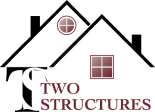Tyvek vs. ZIP System: Why We Trust Tyvek to Protect Our Homes
When it comes to weather-resistant barriers (WRBs), one of the most common debates among builders is Tyvek® housewrap vs. Huber’s ZIP System® (the green board). Both are designed to keep water and air out, and both are widely used across the country.
ZIP is a WRB-sheathing system—an integrated structural panel with a factory-applied water-resistive barrier and taped seams. Tyvek, on the other hand, is a dedicated housewrap applied over OSB sheathing.
We’re not here to say ZIP is a bad product—it’s not. Many builders use it successfully. But after more than a decade of building homes in Oklahoma’s unpredictable climate, our choice is clear: we trust Tyvek.
Here’s why.
1. 10+ Years of Proven Performance with Tyvek
We’ve been building homes for nearly 20 years, and for more than a decade we’ve trusted Tyvek to protect them. In all that time, we’ve experienced zero water-intrusion issues when it’s installed correctly. That kind of real-world track record matters. When families trust us to build their homes, we choose materials that have proven themselves over time-not just in theory, but out in the field.
2. Why We Prefer Tyvek Over WRB-Sheathing Systems
At Two Structures Homes, we build with a proven OSB + Tyvek® weather-resistant barrier system designed to deliver superior long-term protection for your home. This layered moisture-management approach is one of the key reasons our homes can stand up to Oklahoma’s extreme weather year after year.
The OSB sheathing provides structure, while Tyvek creates a drainable weather barrier on the outside. If any water ever gets behind the Tyvek, the OSB Resin-rich, pressed surface — helps shed water temporarily and helps direct it down and out of the wall system instead of letting it soak into framing. This built-in drainage plane is critical for keeping walls dry and durable.
Tyvek is installed like shingles, with each sheet overlapping the one below. This shingled installation lets water shed naturally downward, even if one layer is compromised. It’s a layered defense system with built-in redundancy, giving your home multiple lines of protection against wind-driven rain and moisture intrusion.
By combining high-quality materials with proven installation techniques, we build homes that are not only energy-efficient and comfortable, but also resilient, low-maintenance, and built to last—protecting your investment for years to come.
By contrast, a WRB-sheathing system like ZIP relies almost entirely on tape adhesion at seams to maintain the water and air barrier. If that tape ever fails, there’s no secondary layer of defense. And once siding or brick is installed, those taped seams are hidden forever—but they remain the most vulnerable point of the system.
With Tyvek’s shingled layering, we’re not depending on one product or one line of tape. We’re relying on smart building science and proven redundancy.
3. Tape Dependency Problems in Real Life
We’ve used ZIP in the past, and the issues we experienced came down to tape performance and installation sensitivity:
- Rollers couldn’t always generate the required pressure to imprint tape as advertised and required for warranty. “ZIP System Tape is a pressure-sensitive tape that must be rolled in (ZIP System tape roller) to achieve maximum bond to the panel.” — Huber
- Warranty inspections required visible roller tread marks to prove adhesion—slowing crews down.
- Framers occasionally struggled to lap seams correctly.
- In cold weather, crews had to warm the tape in their trucks just to get it to stick properly.
When your weather barrier depends on heated tape to work in January, that’s a system we’re less comfortable relying on for long-term performance.
4. Nail Penetrations = Potential Weak Points
With WRB-sheathing systems like ZIP, nails always puncture the coated panel, and nail depth can vary—especially in areas like garage portal frames where fasteners are dense. Every nail hole is a potential water entry point, and realistically, no one goes back and tapes over every nail.
Demonstrations have shown water can run through unsealed nail penetrations in ZIP panels.
With Tyvek, the behavior is different:
- The flexible nonwoven fibers slightly deform around the nail shank, reducing the size of the hole compared to rigid panels.
- Cap nails are used to secure the wrap, which spread out pressure, prevent tearing in high winds, and help keep the WRB tight against the sheathing.
- Tyvek’s surface tension and layering help water drain down and out rather than in through fasteners.
Tyvek isn’t technically “self-sealing,” but its flexibility and drainage strategy make the system more forgiving if fastener placement isn’t perfect.
5. Cost & Value
Tyvek is also more cost-effective, which matters when managing multiple builds. Production builders—who put up thousands of homes per year—almost universally rely on WRB wraps like Tyvek. If Tyvek weren’t reliable, those large-scale builders would have seen systemic failures long ago.
In our experience, some custom builders adopt ZIP more for the perception of higher quality than its actual long-term performance advantages. We prefer to make choices based on track record and resilience, not marketing trends.
The Bottom Line
After 10+ years of real-world experience, we’ve seen Tyvek deliver consistent performance, easier installation, and zero warranty headaches.
ZIP is a legitimate product, but it’s less forgiving and has less built-in redundancy than a properly layered Tyvek + OSB system. In a climate like Oklahoma, that margin for error matters.
At Two Structures Homes, we choose Tyvek because it’s proven, cost-effective, and protects families for the long run.
Quick Comparison: Tyvek vs. WRB-Sheathing Systems

Final Thoughts
At Two Structures Homes, we believe in building homes that are Built Better—and that means making smart choices based on long-term performance, not marketing trends.
ZIP is a capable WRB-sheathing product, but Tyvek’s layered, shingled system offers more forgiveness, built-in redundancy, and a proven track record in Oklahoma’s climate. That’s why we trust Tyvek to protect the families who trust us to build their homes.
